How to Get Rid of Thistle Weeds for Good
Updated: Feb. 28, 2024
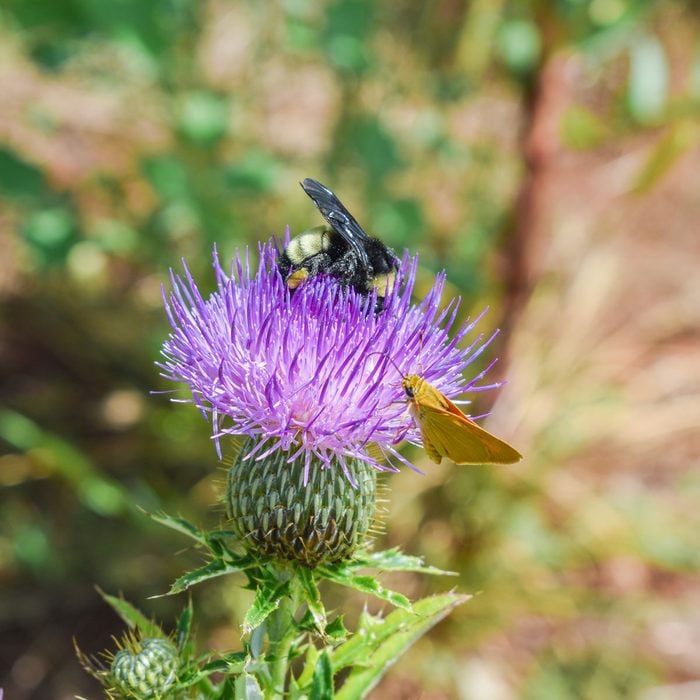
Here's what to know about evicting those prickly intruders from your yard, plus when to let them be.
When thistles take root on turf grass, they can quickly turn your shoeless paradise into a prickly bummer. But just because you find some growing in your yard doesn’t necessarily mean it’s time for an all-out battle.
“There are bad thistles, which are exotic species that take over, and good thistles, which are native species that don’t take over,” says Ray Moranz, Ph.D., an ecologist at the Xerces Society for Invertebrate Conservation.
“We heartily recommend people kill bad thistles. But we really want people to retain good thistles, and even plant them as they are amazingly important to pollinators.”
With growing concerns over pollinator and habitat loss, even experts in eradicating thistles agree about leaving the good ones.
“Many thistles have a high value to local ecosystems,” says Roger May, Ph.D., director of technical operations at TruGreen. “Additionally, thistle seed is a major food source for birds, such as goldfinches.”
Here’s how to identify which kind of thistles you have, and how to get rid of bad thistles for good.
On This Page
About the Experts
Ray Moranz, Ph.D., a grazing lands pollinator, ecologist and partner biologist for the Xerces Society for Invertebrate Conservation.
Meaghan Anderson, a field agronomist at Iowa State University Extension and Outreach.
Carrie Spoonemore, a gardening writer/advocate and co-creator of the From Seed to Spoon app.
Roger May, Ph.D., a horticulturalist and director of technical operations at TruGreen.
Keri Wilson, a horticulturalist and plant expert for the Garden Media Group.
What Is Thistle?
Thistles are prickly, flowering, herbaceous plants, members of the Asteraceae family, along with sunflowers and asters.
Species like Canada and bull thistles are invasive and can quickly dominate a yard. Native thistles, however, don’t over propagate and provide many ecosystem benefits. Only a handful of species exist in each region. Your local extension office and this booklet from the Xerces Society can help identify what’s in your yard.
Types of Thistle
Invasive thistles to remove include Canada, bull, milk, musk, sow, Scotch (cotton), Italian and creeping.
Canada thistle (bad)
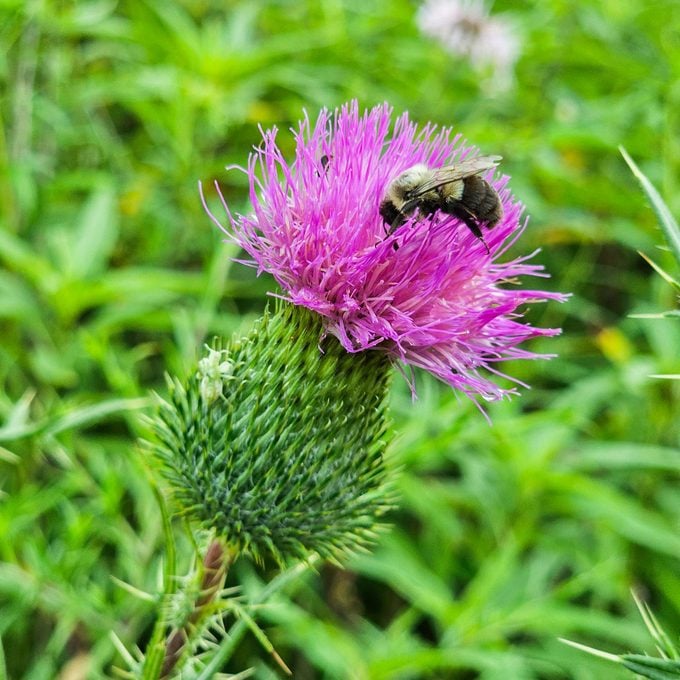
Canada thistles grow in every state, especially in lawns and meadows. They produce abundant seeds, plus spread through their roots [rhizomes].
“New plants pop up from the roots, so where you had one Canada thistle last year, you might have 30 this year, and they are all interconnected,” says Moranz. “This is probably the worst of the bad thistles.”
Bull thistle (bad)
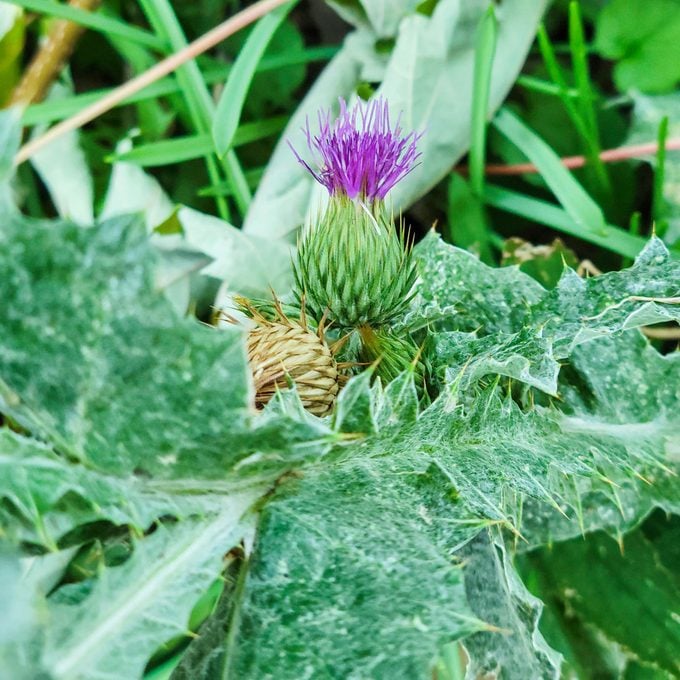
Invasive bull thistles also have spread to every state and grow in disturbed areas. They reproduce via seeds only. If you see one, take immediate action to get rid of it.
“Bull thistle is considered noxious in some places and experiences aggressive growth, making it challenging to contain,” says Spoonemore.
Milk thistle (bad)
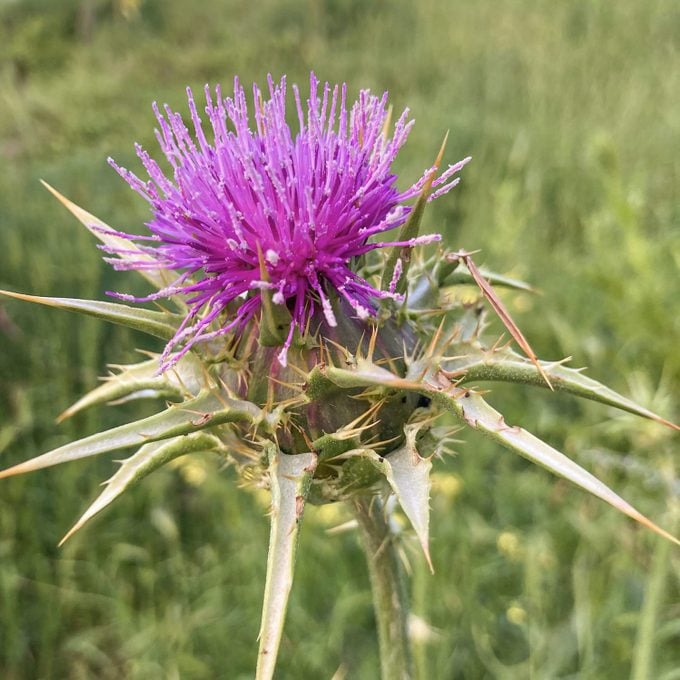
Milk thistle is most common in the South and on the West and East Coasts, often growing in disturbed areas like pastures and along roadsides and fences. It reproduces via seeds only.
“Milk thistle is highly adaptable and can destroy ecosystems, plus its seeds can remain viable for years,” says Wilson. “It’s also difficult to remove, thanks to its deep roots.”
Native thistles (good)
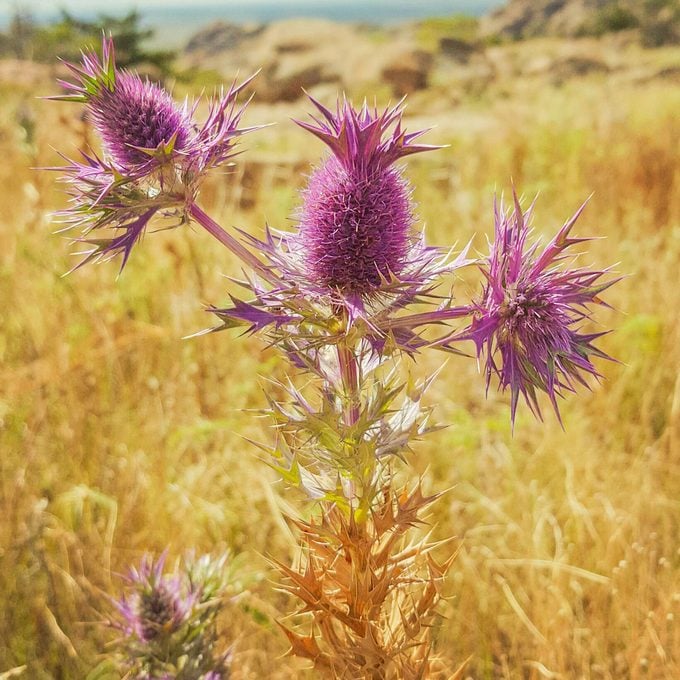
All 65 species of native thistles are great yard companions for pollinators and birds. Plus, having native thistles around can keep invasive ones at bay.
A few of the more common are field, tall and bristly thistles. In their second year, Moranz says, these biennials “bloom like crazy, feed a lot of bees and butterflies, produce seeds and die. They spread by seeds that get carried by the wind, but they don’t take over.”
How Does Thistle Spread?
Depending on the species, thistles can spread through seeds, rhizomes and root fragments.
“Most thistles are biennials that spread only via seed,” Anderson says. “But some thistles, like Canada thistle, are perennials that spread through underground lateral roots as well as seed.”
How To Get Rid of Thistles for Good
First, determine what species it is so you know how it spreads. For seed-spreading thistles, Anderson says, “simply cut the stem off to prevent seed production.” And wear gloves!
Root-spreading thistles require more aggressive tactics. If it’s just a few plants, do this:
- Dig up as many of the roots as you can with a sharp weeding tool.
- Take care to remove all the green parts, May says, or it will continue to feed the underground rhizomes. “That will force it to use up stored food and eventually weaken it,” May says.
- Cover the area with mulch, cardboard or a heavy vegetation to keep the thistles from resurfacing.
If your thistles have spread to a larger area, it’s too much to dig them up, so you’ll need herbicides:
- Cut off plants near the soil line.
- Apply weed killer to the top of the cut-off stems. Before jumping to synthetic chemicals, try concentrated white vinegar. Regardless of which you use, spray individual plants, not an entire area. That way, you avoid hurting beneficial plants and changing your soil’s pH.
- Repeat the application after a few weeks.
“While homeowners can get rid of thistles themselves, in many cases hiring a professional is the best resource to control them,” says May.
How To Prevent Thistle From Taking Root In Your Yard
“The real key to keeping thistles out of an area is to eliminate opportunities for them to get established,” says Anderson. “This may mean mulch, a healthy stand of grass or some other kind of ground cover.”
Other preventative tips include:
- Keep your lawn healthy, watered and mowed. “Thistles thrive in areas with taller grasses, so maintaining a short lawn can deter their growth,” says Spoonemoore.
- Weed ornamental beds regularly, keeping an eye out for thistle seedlings.
- Landscape with thick, shady plants that block the direct sunshine thistles crave.
- Install landscape fabric or weed barriers.
- Improve soil drainage. Thistles prefer compacted soil.
“Many invasive thistles grow in disturbed areas, so ensuring you have a healthy ecosystem filled with native plants can discourage undesirable species from taking root,” says Wilson.
FAQs
Why is thistle so hard to eliminate?
Two reasons: Their spreading root (rhizome) systems and proliferation of seeds, which remain viable for years. In general, thistles are highly adaptable and thrive in tough conditions.
Does vinegar kill thistle?
Yes. “Vinegar burns the tissue that it comes in contact with,” says May. “This technique can work for annual or biennial types of thistle, but won’t do much to control perennial types.”
